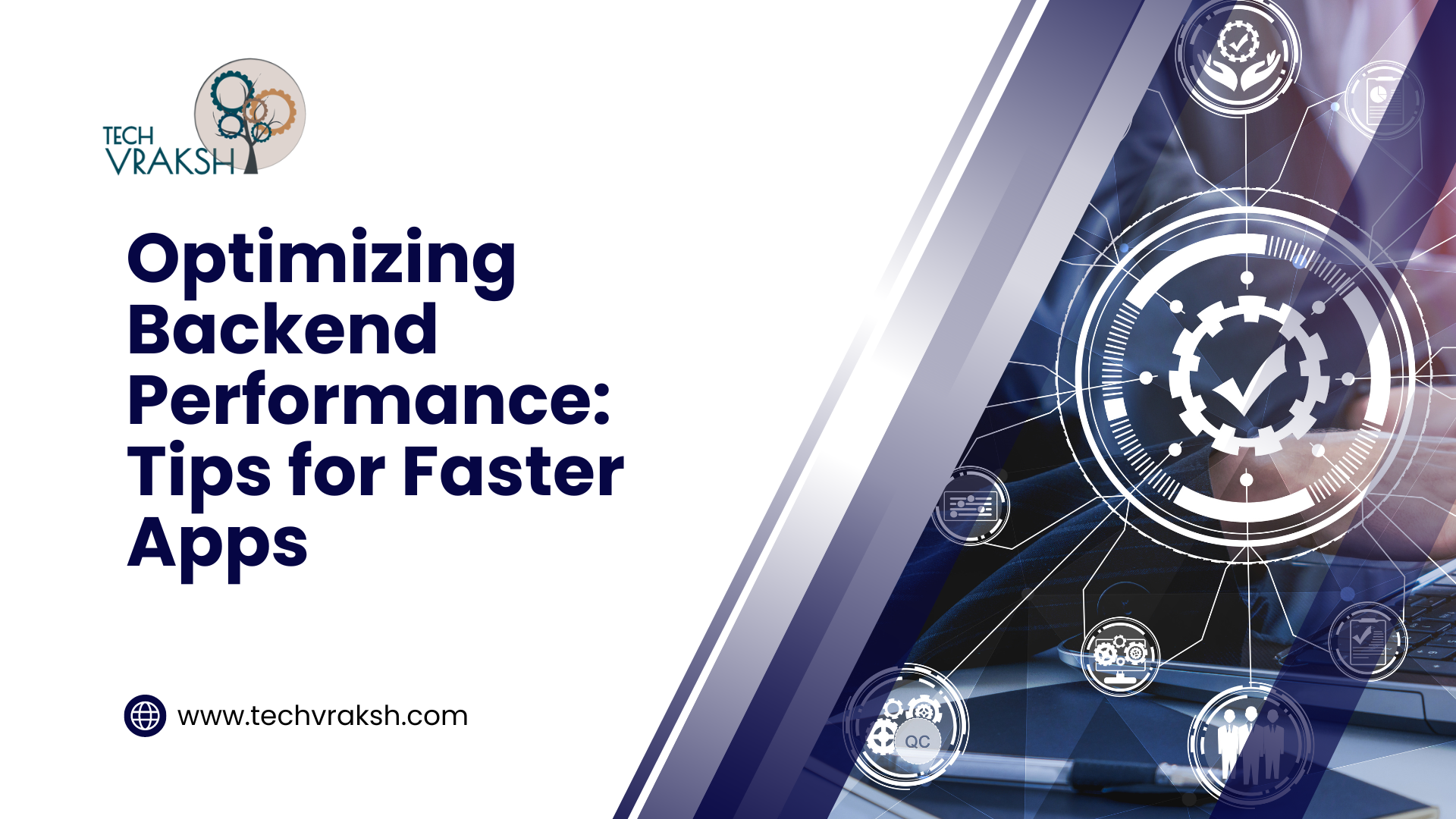In today’s fast-paced digital landscape, speed is everything. A slow backend can significantly impact the user experience, leading to higher bounce rates and dissatisfied users. As businesses strive to deliver faster and more efficient applications, optimizing backend performance has never been more critical.
This blog delves into the essential tips and best practices to enhance backend performance, ensuring your applications run smoothly, scale effectively, and provide a superior user experience.
1. Understanding the Impact of Backend Performance
The backend of an application serves as its engine, managing everything from database interactions to server-side logic. A poorly optimized backend can lead to:
- Increased Load Times: Slow data retrieval and processing can delay page loads, frustrating users.
- Higher Resource Consumption: Inefficient code and processes consume more server resources, increasing costs.
- Scalability Issues: Applications that don’t scale well under load can crash during peak usage times.
- SEO Penalties: Slow backend performance can negatively affect your search engine rankings.
2. Key Tips for Optimizing Backend Performance
Here are some actionable tips to optimize your backend and deliver faster, more efficient applications:
a. Database Optimization
Databases are often the bottleneck in backend performance. Optimizing database interactions can drastically improve your app’s speed.
- Indexing: Proper indexing speeds up query performance by allowing the database to find rows more quickly.
- Query Optimization: Avoid complex queries that retrieve more data than necessary. Use pagination, limit, and proper filtering techniques.
- Database Caching: Utilize caching strategies like Redis or Memcached to store frequently accessed data, reducing the need to query the database repeatedly.
b. Implement Asynchronous Processing
Synchronous processing can slow down your app, especially when dealing with tasks like API calls or file uploads. Asynchronous processing allows your application to handle multiple requests simultaneously, improving responsiveness.
- Use Message Queues: Tools like RabbitMQ or Kafka can help manage background tasks, reducing the load on your main application.
- Non-blocking I/O Operations: Implement non-blocking code to prevent your application from waiting on slow operations, keeping it responsive.
c. Leverage Efficient Coding Practices
Code efficiency plays a crucial role in backend performance. Well-written code can significantly reduce execution time and resource consumption.
- Minimize Loops and Complex Logic: Avoid nested loops and complex algorithms that increase processing time.
- Optimize Data Structures: Choose the right data structures that provide faster data access and manipulation.
- Avoid Memory Leaks: Ensure proper memory management, particularly in languages like JavaScript or Python, where poor memory handling can degrade performance over time.
d. Utilize Caching Wisely
Caching is one of the most effective ways to reduce backend processing time. By temporarily storing frequently accessed data, caching can minimize the need for repeated computations or database queries.
- In-Memory Caching: Use in-memory caches like Redis for storing session data, user preferences, or other frequently accessed data.
- API Response Caching: Cache API responses where data doesn’t change frequently to reduce server load.
e. Optimize Server Configuration
A well-configured server environment can boost backend performance by reducing latency and improving response times.
- Load Balancing: Distribute incoming traffic across multiple servers to ensure no single server becomes a bottleneck.
- Optimize Web Server Configurations: Adjust server settings, such as connection limits and timeouts, to improve request handling.
- Use Content Delivery Networks (CDNs): Offload static content delivery to CDNs to reduce server load and improve load times for users across different regions.
f. Implement Performance Monitoring
Continuous monitoring of your backend is crucial to identifying performance bottlenecks and making necessary adjustments.
- Use APM Tools: Application Performance Monitoring (APM) tools like New Relic, Datadog, or Grafana can provide insights into server performance, response times, and error rates.
- Set Up Alerts: Configure alerts for high response times, server errors, or resource usage spikes to quickly address issues.
g. Optimize API Calls
API calls are a major part of backend operations, especially in microservices architecture. Optimizing how APIs are handled can improve overall performance.
- Batch Requests: Instead of multiple calls, use batch requests to reduce the overhead.
- Use Compression: Compress data before sending it over the network to reduce payload size and improve transfer speed.
- Limit Payload Size: Avoid sending unnecessary data by filtering responses to include only essential information.
3. Case Study: Real-World Impact of Backend Optimization
Let’s take a look at how backend optimization transformed performance for a leading e-commerce platform:
The Challenge: The platform experienced slow page loads and frequent downtime during peak traffic. User complaints were high, and sales were impacted due to sluggish performance.
The Solution: The team implemented database indexing, optimized API calls, and reconfigured their server environment to balance the load efficiently. They also introduced caching layers and optimized code logic to reduce resource consumption.
The Results:
- 40% Improvement in Load Times: Page load times decreased significantly, enhancing the user experience.
- 30% Reduction in Server Costs: Optimizations reduced server load, leading to lower hosting and operational costs.
- Increased User Engagement: Faster response times led to longer session durations and higher conversion rates.
4. Conclusion
Optimizing backend performance is essential for delivering a fast, reliable, and scalable application. By focusing on database optimization, efficient coding practices, caching, and proper server configuration, you can significantly enhance your app’s performance and provide a better experience for your users.
Whether you’re building a new application or improving an existing one, these tips can help you achieve optimal performance, reduce costs, and ultimately drive success.

